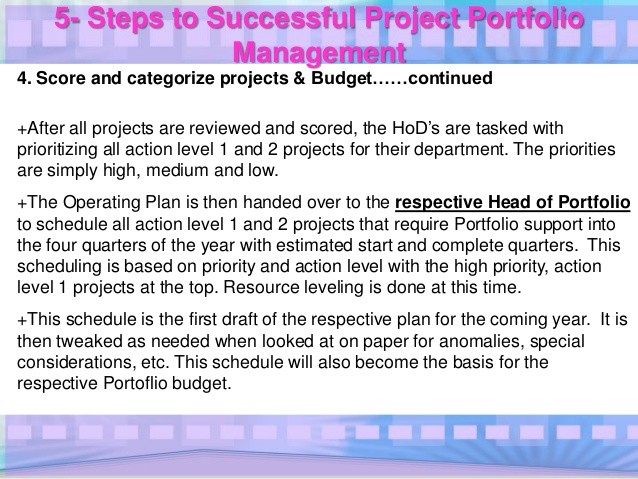Four Steps To Creating Successful Project Portfolios
Post on: 16 Март, 2015 No Comment

The criterion typically assumed to be most important in assessing projects is financial return. But that approach can overlook some huge opportunities.
by Peter High
A successful company is much like the human body in motion: The movements of individual parts are coordinated in order to move the entity as a whole in a single direction. One of the most important factors in driving a company in a desired direction is coordinating and prioritizing projects, including most IT efforts. The task of assigning value to projects can be a confusing one, and the key to project prioritization is in prioritizing the criteria. For while decisions about projects are indeed based on a composite picture, that picture will be much clearer if the various analyses are assigned their proper places.
The criterion typically assumed to be most important in assessing projects is financial return. Return on investment is certainly an important factor, but a project can hardly be deemed a valuable oneno matter how high the financial returnif it leads a company in the wrong direction. Thus, the first factor that should be considered in determining a projects worth is how well it links to corporate and business-unit strategy (possible exceptions are investments relating to government regulation and IT infrastructure). Investments that move a company in the direction that corporate goals dictate are always going to be more valuable than ones that do not, no matter what the numbers say.
Second in line to strategic considerations is the financial analysis. Before crunching numbers, however, its important to develop a conceptual understanding of the investmentthat is, whether the project is a revenue-enhancer (one that will, for example, enable the company to reach new customers), a cost reducer (a project that will automate manual processes, for instance), or an enabler (such as a technological platform on which other projects will be built). This understanding provides a foundation on which a solid quantitative analysis can be layered. The resulting financial picture will be more complete and will thereby help avoid one-dimensional decisions, such as dismissing an enabler simply because it might have a negative return on investment. Once a positive assessment of the above two factors is achieved, its important to evaluate risk. Risk should be analyzed from five perspectives:
- Technologyfor example, whether it has been tested
- Managementwhether, for instance, a large number of people is required to oversee the project
- Implementationperhaps results will not be seen for several years
- External factors such as government regulation or concerns about the economy
- Financial considerationsrisk to credit rating, for example

Risk balance is also important in a portfolio of projects. High risk is not necessarily cause for automatic rejection, as leadership in an industry often requires some risk-taking.
The final criterion of project assessment is often overlooked: interproject dependencies. A project cannot be assessed in isolation if there are other projects that depend on it or that it depends on. Along the same lines, project derivatives are an equally important consideration, particularly when a project demands a high up-front investment or a high level of training. If the project is likely to spawn new, related projects, the return on the investment in time, training, and dollars is likely to be that much greater, a likelihood that should be factored into the assessment.
Creating a strong portfolio of projects need not be left to guesswork. Following these four factors in just that order linkage to strategy, financial analysis, risk assessment, and interproject dependenciescan put your company on a path that leads to a single destination: success.
Originally published in Information Week














